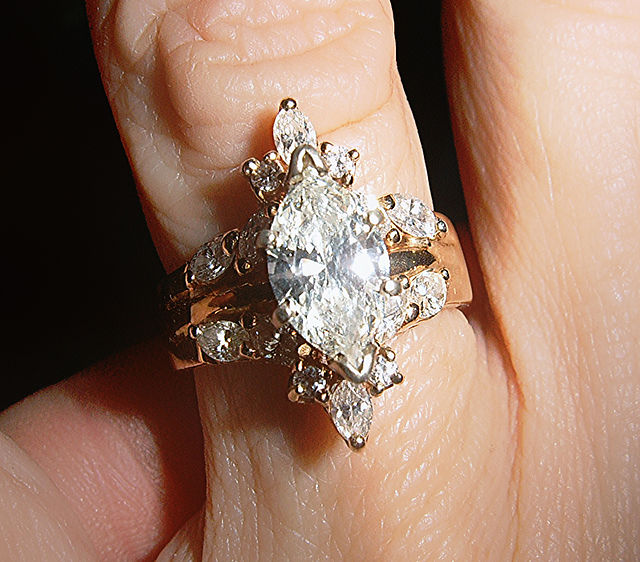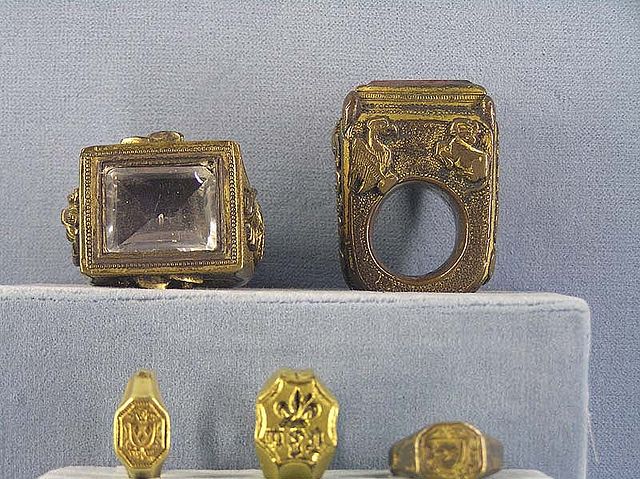An engagement ring, also known as a betrothal ring, is a ring indicating that the person wearing it is engaged to be married, especially in Western cultures. A ring is presented as an engagement gift by a partner to their prospective spouse when they propose marriage or directly after a marriage proposal is accepted. It represents a formal agreement to future marriage. In most Western countries, engagement rings are worn mostly by women, and rings can feature diamonds or other gemstones. The neologism "mangagement ring" is sometimes used for an engagement ring worn by men. In some cultures, including Northern Europe, both partners wear matching rings, and engagement rings may also be used as wedding rings. In the Anglosphere, the ring is customarily worn on the left hand ring finger, but customs vary considerably elsewhere across the world.
Two engagement rings, as traditionally worn on the ring finger of the left hand
An engagement ring
This wedding set contains two separate rings that look incomplete separately.
A ring is a round band, usually made of metal, worn as ornamental jewelry. The term "ring" by itself denotes jewellery worn on the finger; when worn as an ornament elsewhere, the body part is specified within the term, e.g., earrings, neck rings, arm rings, and toe rings. Rings fit snugly around or in the part of the body they ornament, so bands worn loosely, like a bracelet, are not rings. Rings may be made of almost any hard material: wood, bone, stone, metal, glass, jade, gemstone or plastic. They may be set with gemstones or with other types of stone or glass.
Ruby ring
Henig II rings from the Snettisham Jeweller's Hoard
Episcopal rings for bishops and archbishops. (Musée national du Moyen Âge, hôtel de Cluny, Paris)
Image: Regards acrostic ring







